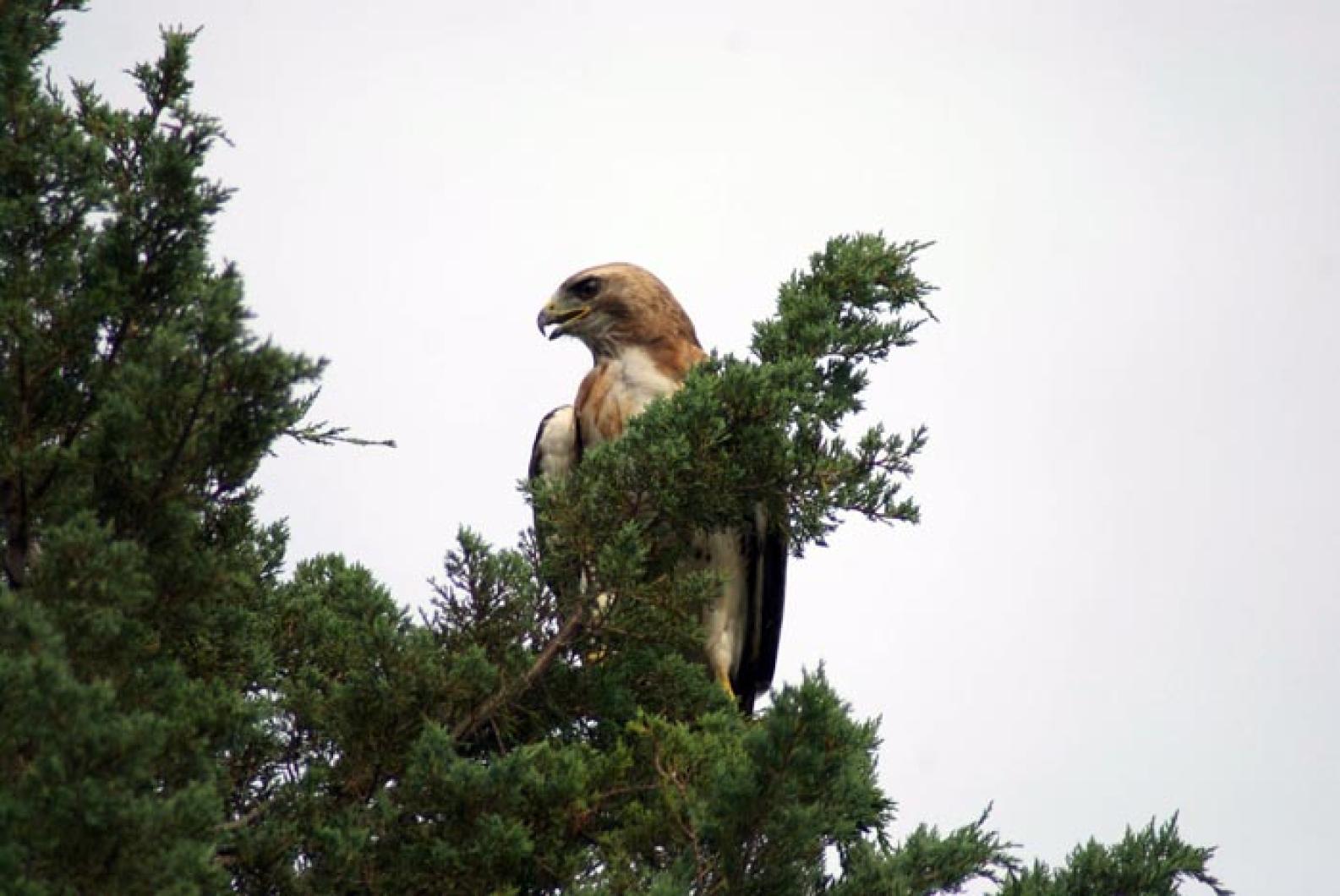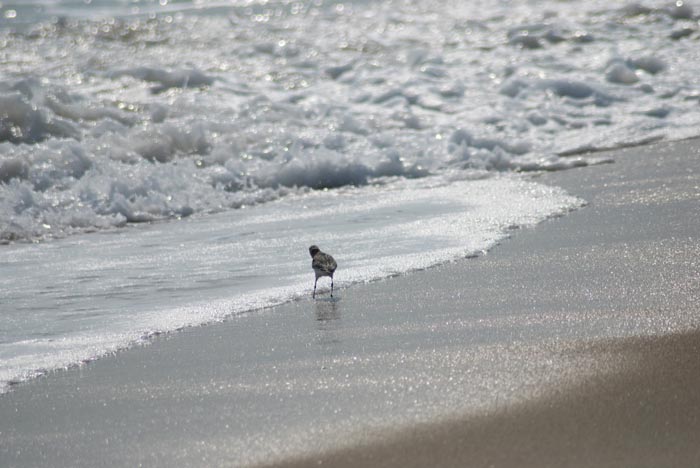Ruby-throated hummingbirds are tiny little bundles (3.5 grams or 0.12 ounces) of activity that must eat constantly, especially at this time of the year, when they are migrating southward to their wintering grounds in Central America. Here I report that their aggressive behavior of chasing other hummingbirds away from a food source — as reported in last week’s column — takes place even during tropical storms!
My family and I were visiting a friend in a small town about 10 miles south of Albany, N.Y. on August 28, during Tropical Storm Irene. We had northerly 30 to 50 mile per hour winds and a steady driving rain for 16 hours that yielded about 10 inches of rain. The hummingbird feeder was inadvertently left out, and the hummers must have appreciated it as at least three of them were sipping the sugar water throughout the storm. We watched the hummers chase each other all day long. When there was more than one hummer at the feeder, the dominant hummer would bob her head either up and down or side to side as she perched on the feeder, then she would fly toward the second hummer and chase it away. The chases were even more interesting when there were three hummers present! They seemed to be unaffected by the strong wind and rain.
The energy intensive chases and activities of these hummers in a tropical storm suggests just how important it is for these minute birds to eat every day, even when a tropical storm interferes with their activities. Yet many of these hummers fly nonstop across the Gulf of Mexico on both their northward and southward migrations, and there is no food for them to eat during that flight.
These chasing behaviors can be observed wherever hummers congregate. At this time of the year, large patches of the orange flowered jewelweed are good places to find these hummers.
Bird Sightings
The southward migration of birds is going strong, and there are a lot of birds around now.
Allan Keith has been out a lot and has numerous birds to report. On Cape Pogue on Sept. 10, his highlights include the brown pelican that has been hanging around since Tropical Storm Irene, a parasitic jaeger that was flying around with a flock of at least 600 common, roseate and black terns, five snowy and 12 great egrets, whimbrel, yellow bellied flycatcher, white-eyed vireo, yellow-throated vireo, palm warbler, and blackpoll. On Sept. 14, Lanny McDowell, Pete Gilmour and Porter Turnbull spotted a black-and-white warbler on Cape Pogue and easily found the white-eyed vireo as it was singing frequently.
The hawk migration is also well underway. Seven merlins have been found by Allan Keith, Lanny McDowell and Pete Gilmour from various locales around the Island — it seems early for that many to be here. A sharp-shinned hawk was also present at the Gay Head Cliffs on Sept. 10. Tim and Sheila Baird report an American kestrel foraging along Atlantic Drive in Edgartown on Sept. 12. And on Sept. 14, Pete Gilmour, Lanny McDowell and Porter Turnbull spotted a peregrine falcon at Wasque. So the falcons are back, and we can expect their numbers to increase as the month progresses.
My Sept. 10 Saturday morning guided birding tour found two lingering osprey, a juvenile black-crowned night-heron and a green-backed heron at the Oak Bluffs pumping station. On Sept. 12, I spotted five belted kingfishers flying around the Shellfish Hatchery on the Vineyard Haven side of Lagoon Pond.
Tim and Sheila Baird also report ruby-throated hummingbirds, chipping sparrows and gray catbirds are still around, and that the tufted titmice and white-breasted nuthatches have returned to their feeders after being absent all summer. The northern orioles that hang out around their trumpet vine have not been present for a few days; maybe they have moved further south.
Although Allan Keith pointed out that the songbird migration seems a bit slow so far, he was able to find ovenbird, redstart, northern waterthrush, warbling vireo and Philadelphia vireo at the Gay Head Moraine on Sept. 12. At Menemsha Hills he found redstart, chestnut-sided and yellow warblers on Sept. 13.
The numbers of migrating songbirds should pick up this weekend, as cooler temperatures and northwest winds arrive on Friday and Saturday. Such weather is much more favorable for migrating birds.
Please report your bird sightings to the Martha’s Vineyard bird hotline at 508-645-2913 or e-mail birds@mvgazette.com.
Robert Culbert leads guided birding tours and is an ecological consultant living in Vineyard Haven.





Comments
Comment policy »